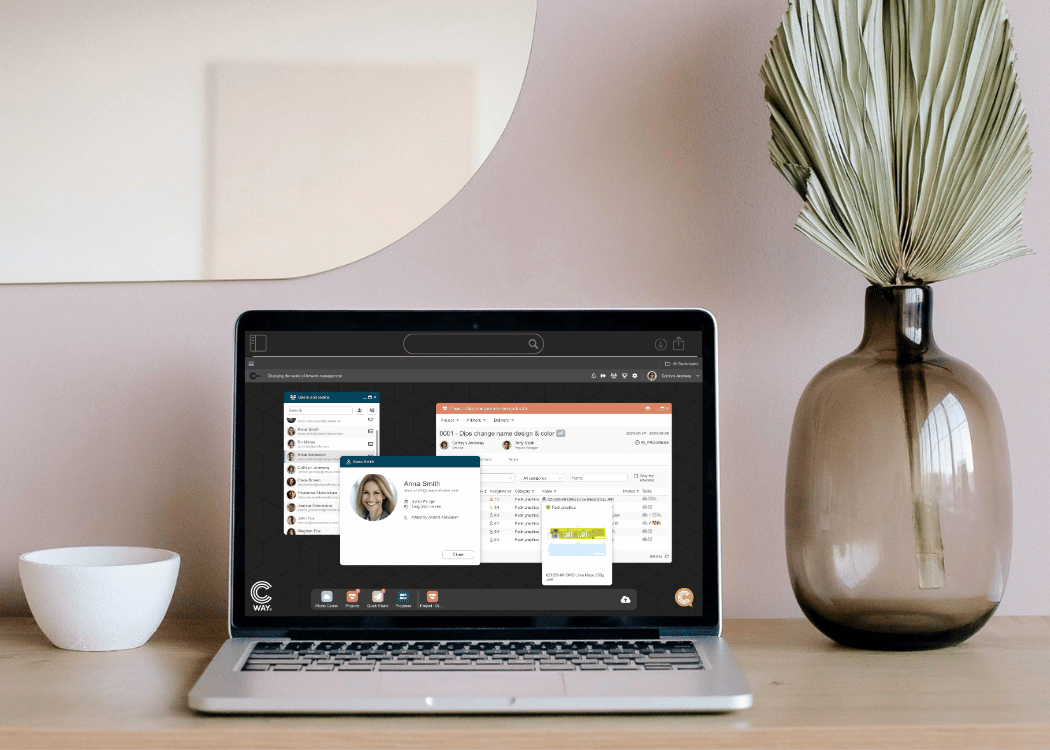How to streamline creative projects with a design management tool
In this article, we’ll explore how a design project management tool helps creative teams and brand managers stay organized, deliver faster, and...
2 min read
Ekaterina Skalatskaia
:
Apr 5, 2025 7:00:00 AM

Creative teams often struggle with scattered feedback, versioning issues, and approval delays—especially in fast-paced packaging and branding projects. These common pain points slow down production and risk brand inconsistency. Design project management tools are built to solve exactly that. In this article, we’ll dive into what they are, how they work, and why they’ve become essential for teams looking to boost efficiency and deliver consistent, on-brand design assets—on time, every time.
Traditional project management software—like those made for IT or operations—often fall short when applied to creative workflows. Design projects have their own unique challenges:
Visual assets that need multiple rounds of feedback
Stakeholders from different departments, regions, or external agencies
Tight launch timelines driven by marketing calendars or product rollouts
File versioning chaos and unclear approval paths
For teams working on packaging and branding, these pain points are amplified. That’s why adopting a creative project management tool designed for design-centric workflows isn’t just helpful—it’s a necessity.
When evaluating design project management software, especially in a branding or packaging context, keep an eye out for the following features:
No more hunting for files in email chains or cloud folders. Look for tools that allow you to upload, categorize, and version creative files right within the platform. Bonus if you can view design files without needing to download them.
Design is visual—your feedback should be too. The best design project management tools offer in-app commenting, markup, and side-by-side comparisons so everyone can weigh in clearly, reducing back-and-forth and misinterpretation.
Approvals in creative projects often involve multiple stakeholders: brand, legal, marketing, production. A good tool should let you set up and automate the design review process so nothing falls through the cracks.
While creative timelines may shift, having a visual overview of key deadlines helps everyone stay aligned. Choose a tool that integrates task management with calendar or Gantt-style views to manage dependencies and milestones.
Seamless integration with tools like Adobe Creative Cloud, Figma, or Digital Asset Management systems helps designers work efficiently without duplicating efforts or jumping between platforms.
At Cway, we understand that creative teams need more than generic task lists. Our platform is designed to support the full lifecycle of a design project—from brief to final approval.
With Cway, you get:
Tailored design workflows that reflect your brand’s way of working
Visual version comparison and on-artwork feedback for accurate reviews
Automated approvals that reduce delays in the sign-off process
Centralized project overviews for clear stakeholder alignment
Whether you’re launching new packaging, refreshing a brand identity, or managing a multi-market rollout, Cway empowers your team to work faster, with fewer errors and more visibility.
If your current setup feels more like a patchwork than a process, it might be time to level up. A dedicated creative project management tool like Cway gives your team the structure, clarity, and flexibility needed to thrive in today’s demanding design environment.
Want to see how it works in action? Book a demo to explore how Cway can help your brand create better packaging, faster.
Design project management tools are platforms that help creative teams plan, track, and collaborate on design-related tasks. They streamline workflows, centralize feedback, and ensure timely delivery of creative assets—especially helpful in branding and packaging projects.
Packaging design involves many steps: concept creation, compliance checks, artwork reviews, and approvals. A good tool offers visual feedback, task tracking, and automated workflows that make this complex process more efficient and accurate.
Yes, they can—and should. Using dedicated tools reduces the risk of miscommunication, lost feedback, and outdated file usage. They provide a centralized hub for everything related to the project.

In this article, we’ll explore how a design project management tool helps creative teams and brand managers stay organized, deliver faster, and...

Design teams today are under constant pressure to deliver faster, stay aligned, and manage ever-growing creative demands. The right design project...
Managing artwork processes across multiple teams, versions, and approvals can quickly become chaotic and error-prone. Traditional methods often lead...